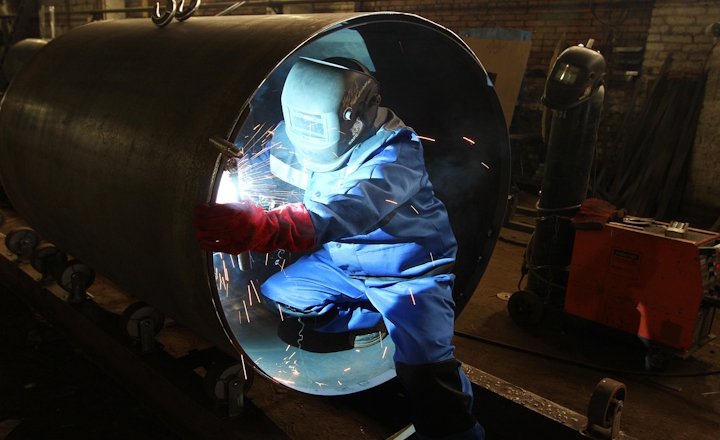
Image Source
Underwater welding plays a crucial role in the construction, maintenance, and repair of submerged structures along Australia's extensive coastline. From offshore oil rigs and ship hulls to subsea pipelines and port infrastructure, underwater welders help keep essential assets operational and safe.
Working in such extreme conditions requires more than just technical skill—it demands strict adherence to safety protocols, compliance with national standards, and a deep understanding of best practices. In this article, we’ll explore the key Australian standards governing underwater welding, the importance of compliance, and how industry professionals maintain safety and quality at every stage of a welding operation.
The Role of Standards in Underwater Welding
Standards are essential in underwater welding because they create a framework for safety, quality, and performance. In Australia, these standards are not just guidelines—they’re often a legal and contractual requirement on commercial diving and subsea projects. They ensure that welders, diving teams, and project owners are all operating from the same rulebook when it comes to procedures, qualifications, equipment, and environmental safety.
One of the most important documents in this space is the Australian Standard AS/NZS 2299.1, which covers occupational diving operations. While it doesn’t focus exclusively on welding, it outlines the safety and operational requirements for all professional deep sea welding services in Australia, which directly includes underwater welding.
For welding-specific standards, professionals often look to a combination of Australian codes and internationally recognised documents, such as the ISO 15614 for welding procedure qualification and AWS D3.6M, a widely used guide for underwater welding practices.
Certification and Qualifications for Underwater Welders
Underwater welding requires a very specific set of skills, and certification plays a vital role in ensuring those skills are consistent and verifiable. In Australia, commercial divers who perform welding work must be certified not only as divers but also as qualified welders according to industry standards.
To work legally and safely, a diver-welder must typically hold an ADAS (Australian Diver Accreditation Scheme) certification. ADAS certifications align with international standards, making them widely respected. On the welding side, a welder typically needs to be certified to perform both surface and underwater welds, with training in both wet and dry welding techniques.
These qualifications help reassure project owners that the work being done will meet both structural and safety expectations, even in the challenging underwater environment.
The Difference Between Wet and Dry Underwater Welding
When people hear "underwater welding," they often imagine someone working completely submerged, sparks flying in the water. That’s one form—called wet welding—but it’s not the only method used.
Wet welding is performed directly in the water, often using shielded metal arc welding (SMAW) with specially designed waterproof electrodes. It’s commonly used for quick repairs or when dry methods are not feasible due to time or budget constraints. While effective, it requires extra safety precautions and careful quality control due to the risks of hydrogen cracking and lower visibility.
Dry welding, on the other hand, takes place in a sealed chamber known as a habitat. This chamber is pressurised and filled with a gas like helium to allow for high-quality welding in a dry environment, even while underwater. Dry welding is typically used for high-specification, long-term repairs or fabrication. It delivers results that are more comparable to surface welding and allows for greater inspection and quality assurance.
Both methods are used across Australia, and each must follow specific procedures and standards to ensure safety and effectiveness.
Safety as the Cornerstone of Every Project
Underwater welding is inherently dangerous, combining the risks of diving with the hazards of electrical work and intense heat. That’s why safety is not just an add-on—it’s built into every phase of a project, from planning through execution.
Before any work begins, thorough risk assessments are conducted. Dive teams are briefed on procedures, emergency protocols are tested, and all equipment is checked to ensure it meets safety standards. On-site supervisors continuously monitor conditions such as water currents, visibility, and diver fatigue to prevent accidents before they happen.
The use of surface-supplied air systems, redundant communication lines, and live monitoring all help reduce the risk of injury. Additionally, underwater welders must follow strict decompression schedules to avoid health complications like decompression sickness.
Every member of the team has a role to play in keeping the operation safe, and this shared responsibility is what allows deep sea welding services to operate reliably in some of the most challenging environments.
Inspection and Quality Assurance After Welding
Completing a weld underwater is only part of the job. Once the weld is done, it must be thoroughly inspected to ensure it meets performance and durability standards. In many commercial applications, especially those involving critical infrastructure, there is no room for error.
Inspection may be done visually, using cameras or diver observations, or through non-destructive testing techniques such as ultrasonic testing. The relevant standards and codes guide these inspections, helping to confirm that the weld is free of defects, properly fused, and suitable for long-term use.
In some cases, additional stress testing or corrosion checks may be required, depending on the material and environment. Maintaining a strong inspection protocol helps protect both the structure and the reputation of the company performing the work.
Environmental Considerations and Sustainability
Australia’s marine environment is both diverse and sensitive. As such, underwater welding operations must be carried out with respect for marine life and ecosystems. Compliance with environmental regulations is a key part of the job, particularly in areas near coral reefs, marine parks, or shipping channels.
This includes managing waste materials, using environmentally safe tools and consumables, and ensuring that debris from welding or cutting operations doesn’t pollute the water. Many companies also factor in the carbon footprint of their underwater operations and explore ways to reduce environmental impact through more efficient planning and technology use.
By integrating sustainability into their operations, businesses offering underwater welding services can align with broader environmental goals while still delivering high-quality outcomes for clients.
Why Standards Build Trust in Deep Sea Welding Services
By following Australian standards, maintaining proper certifications, and embracing industry best practices, underwater welding professionals demonstrate their commitment to safety, quality, and reliability. For high-value commercial clients, that peace of mind is just as important as the weld itself.
If you're evaluating deep sea welding services in Australia, ask questions about compliance, training, and safety protocols. The best providers won’t hesitate to walk you through their approach. That transparency alone is a clear sign of a company that takes standards seriously.
| < Prev | Next > |
|---|




